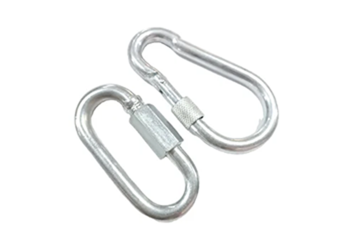Oct . 31, 2024 00:30 Back to list
m8 wedge anchor
Understanding the M8 Wedge Anchor A Reliable Fastening Solution
The construction and engineering sectors constantly seek reliable and robust fastening solutions to ensure the integrity and safety of structural projects. Among the myriad of fastening options available, the M8 wedge anchor stands out for its strength, ease of installation, and versatility. This article explores the features, applications, and installation process of the M8 wedge anchor, making it an essential component for various construction needs.
What is an M8 Wedge Anchor?
An M8 wedge anchor is a type of concrete anchor fastener designed to secure objects to concrete surfaces. The M8 designates the diameter of the threaded rod, which is 8 millimeters. This anchor features a unique expansion mechanism that grips the sides of a pre-drilled hole in concrete, providing exceptional holding power. Typically made from high-strength materials such as carbon steel or stainless steel, M8 wedge anchors can withstand significant loads and offer excellent corrosion resistance, making them suitable for both indoor and outdoor applications.
Key Features
One of the primary advantages of the M8 wedge anchor is its ease of installation. The installation process requires minimal tools and can often be completed swiftly. This efficiency is enhanced by the anchor's design, which allows for a strong hold without the need for a nut and washer. Instead, the expansion clip mechanism secures the anchor tightly against the hole walls when the bolt is tightened.
Another critical feature is its load-bearing capacity. The M8 wedge anchor can support a substantial amount of weight, making it an excellent choice for securing heavy fixtures or equipment. When installed correctly, these anchors provide reliable performance, reducing the risk of failure in both static and dynamic loads.
Applications
m8 wedge anchor

The M8 wedge anchor is versatile across various applications. It is commonly used in industrial settings for anchoring machinery, lighting fixtures, and HVAC equipment to concrete foundations. In commercial construction, M8 anchors help secure structural components, such as steel brackets and framing, ensuring safety and stability. Residential projects also benefit from using M8 wedge anchors, particularly in securing outdoor fixtures like fences and gates.
Moreover, the ability to use M8 wedge anchors in seismic zones adds to their appeal. Their robust design ensures that structures remain securely fastened, even in the event of an earthquake, making them a preferred choice for engineers and builders concerned about safety.
Installation Process
Installing an M8 wedge anchor is straightforward. First, a hole must be drilled into the concrete using a hammer drill and a suitably sized masonry bit, typically 10 mm for M8 anchors. Once the hole is prepared, the anchor is placed into the hole until it is flush with the surface. Using a wrench, the bolt is tightened; as the bolt is drawn, the wedge-shaped sleeve at the bottom expands against the concrete, creating a strong bond.
It is important to ensure that the hole depth is appropriate based on the anchor length, as inadequate depth can compromise the anchor's holding strength. Additionally, following the manufacturer's guidelines regarding load ratings and safety factors is crucial to ensure optimal performance.
Conclusion
The M8 wedge anchor is a stellar option for those seeking a robust and reliable anchoring solution for concrete applications. Its notable features, including easy installation and substantial load capacity, make it a preferred choice among construction professionals. Whether you're building a new structure or reinforcing an existing one, the M8 wedge anchor undoubtedly stands as a testament to the evolution of fastening technology in the engineering field.


